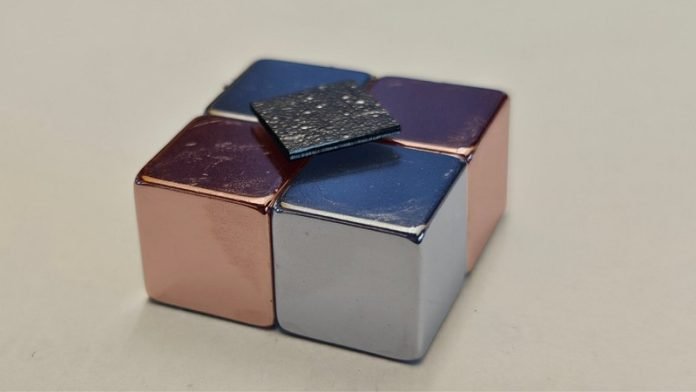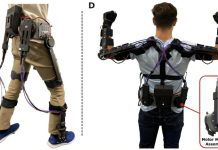
Researchers at the Okinawa Institute of Science and Technology (OIST) have made a fascinating breakthrough with materials that can float in the air, offering new possibilities for advanced technology.
The team, led by Professor Jason Twamley, is exploring materials that levitate—meaning they can stay up in the air without any support or the need for power sources.
Levitation usually happens through magnetic fields.
For example, materials like superconductors can float above magnets and are used in high-tech applications like maglev trains, which operate without touching the ground.
Professor Twamley and his team are taking this concept further with a special platform that can float all by itself.
The floating platform created by the researchers is quite unique. It’s made from graphite—yes, the same material found in pencils!
This graphite is turned into tiny beads, coated with silica, and mixed into wax to form a thin square plate.
This plate can then hover over a grid of magnets.
Unlike other levitating objects that may need constant energy, this platform can keep moving on its own for a while, even though it eventually slows down due to air resistance.
One of the biggest challenges with floating platforms is energy loss through something called ‘eddy damping’.
This happens when the floating material, acting as an electrical conductor, moves through a strong magnetic field and loses energy.
To solve this, the OIST team changed the graphite into an electrical insulator. This new form of graphite doesn’t lose energy as it levitates, which helps it keep moving.
In their experiments, the scientists watched how the platform moved and used magnetic forces to control and slow down its motion.
This process, which involves cooling down the platform’s movement, helps make the platform super sensitive and precise. This improved precision could lead to better sensors for measuring things like force and gravity—more accurate than any current technology.
Professor Twamley explained that by reducing the motion caused by heat and controlling the rate at which the platform loses energy, they can make the platform move less. This precise control over movement is key to creating better sensors.
This new technology isn’t just about floating things. It’s about creating ultra-sensitive sensors that could be used in various scientific and practical applications.
By mastering levitation, insulation, and real-time adjustments, the researchers are pushing forward the capabilities of material science and sensor technology. This could lead to new ways to measure forces very accurately and even new types of technology that seem to defy gravity.



